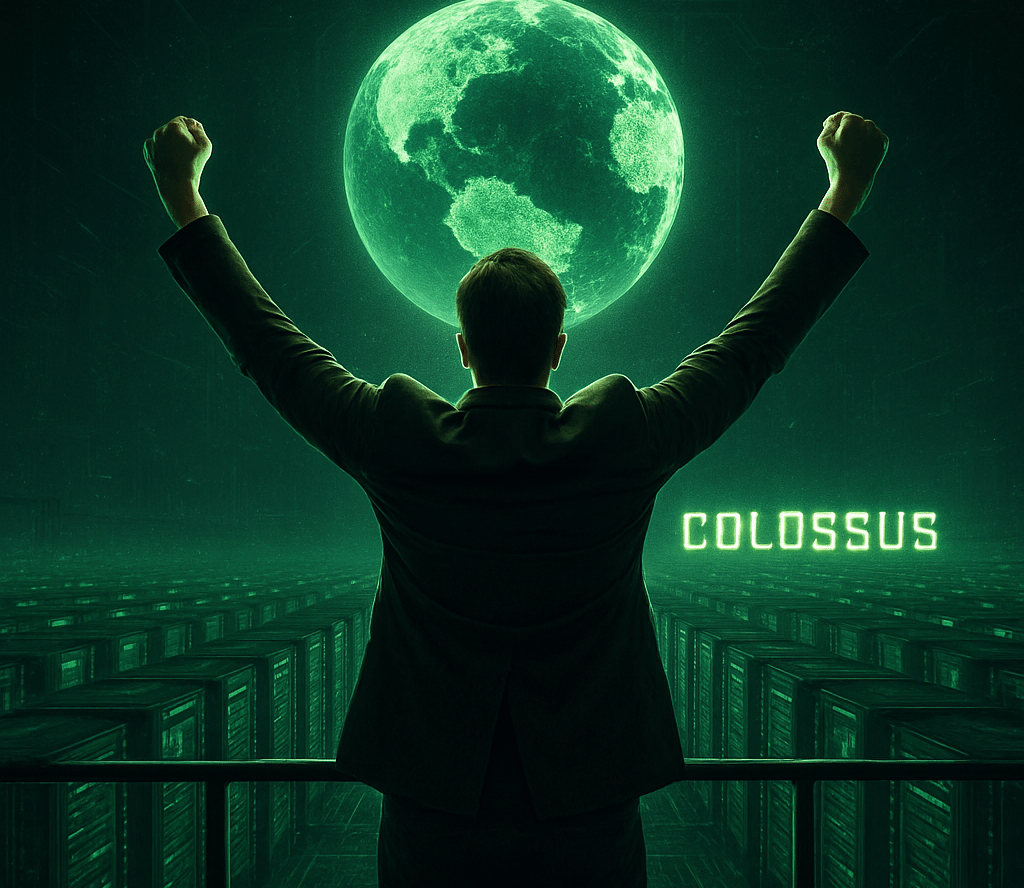Musk’s Colossus: AI’s supercomputer giant
Elon Musk's Colossus supercomputer, the most powerful AI system, integrates Nvidia GPUs, sparks environmental and regulatory issues, and aims to surpass rivals like OpenAI and Meta in advancing artificial intelligence.
TECH INFRASTRUCTURELLMAIARTIFICIAL INTELLIGENCETECHNOLOGY
Eric Sanders
7/9/20253 min read


Elon Musk’s Colossus: The AI Supercomputer For The Future
When Elon Musk says he’s building something, the world seems to scoot to the edge of their seats and proceed to lean in, waiting in anticipation of what wild idea he seems to dream up. His latest creation? Colossus, the most powerful AI supercomputer ever assembled to date. It’s considered as a seismic shift in how artificial intelligence will evolve and poses questions of how the global tech community, regulators, and environmentalists will respond. Colossus threatens to outpace the likes of OpenAI and Meta, looking to push the boundaries of what AI can currently achieve. But like most things at this scale, with great power comes vast amounts of scrutiny, and Musk’s latest titan has ignited a storm of conversations way beyond mere bytes and processors.
The Dawn of Colossus
So what is it? Colossus is a beast built on a massive array of Nvidia GPUs. Though, it's not only about having the greatest amount of GPU power, it’s about how Musk and his team planned and integrated this hardware into a seamless, ultra-efficient AI machine.
- Scale and Power: Multiple thousands of Nvidia’s latest GPUs working in concert.
- Purpose-built for AI: Designed specifically to accelerate machine learning training and inference at a speed that dwarfs previous systems.
- Cutting-edge architecture: A bespoke system addressing the challenges of AI model complexity, data throughput, and energy consumption.
Elon Musk has bluntly stated: “Colossus will outthink and outperform all existing systems.” That’s not hyperbole either, it’s a declaration of intent aimed squarely at industry giants like OpenAI’s GPT line and Meta’s AI initiatives.
The Ethical and Environmental Quake
I have a bit of fight to pick with a build of this size though. Colossus’ formidable capabilities come with an environmental footprint that’s already raising several eyebrows. The supercomputer’s electricity hunger is massive, I'm not talking about oh, maybe a third round at the all you can eat buffet, I'm saying they're wiping out the ENTIRE buffet, and still having room for dessert after!
Environmental groups warn that the race to larger models and faster computations is creating a hidden crisis for us:
- Energy Consumption: Massive GPU clusters require enormous energy, often pushing demand on fossil-fuel-powered grids.
- Heat Dissipation: Cooling such a system involves advanced infrastructure with its own energy costs.
- E-waste Risks: The high turnover in GPU hardware contributes to electronic waste challenges.
Regulators are now stepping in, questioning how these AI behemoths can exist sustainably. Musk’s Colossus has, intentionally or not, become the poster child for this debate. The supercomputer epitomizes the tension between technological progress and environmental responsibility.
Colossus in The AI Landscape
Colossus’ arrival is a technical upgrade and it threatens to realign the strategic landscape of AI research and development. Consider these key impacts:
- Accelerated Innovation: With Colossus, training times for massive language models could shrink dramatically, enabling quicker iteration cycles.
- Competitive Pressure: Companies like OpenAI and Meta will face immense pressure to match or exceed Colossus’ performance or risk falling behind.
- Talent Magnet: Owning the fastest AI supercomputer attracts the best researchers and engineers, further compounding the gap.
- Geopolitical Implications: Tech superpowers will closely watch this, as AI capabilities increasingly intertwine with national security and economic dominance.
Who Will Set the Limits on AI’s Colossal Growth?
The launch of Colossus inevitably triggers a restless question: how do we as a global community set the boundaries on AI’s growth and power? Who decides how big and fast these AI systems should be, and on what terms?
The answers won’t come from technology companies alone. They’ll require balanced dialogue between innovators, regulators, environmentalists, and the public. It’s a conversation about the future we want to build and a future where cutting edge AI accelerates human progress without costing the Earth its stability.
How do we ensure AI remains a tool for empowerment, not a fuel for unchecked escalation? When power scales this quickly, will regulation keep pace, or will we play catch up after the fact?
Efficiency
Transform your workflows and reclaim your time.
Contact Us
Need A Custom Solutions? Lets connect!
eric.sanders@thedigiadvantagepro.com
772-228-1085
© 2025. All rights reserved.
